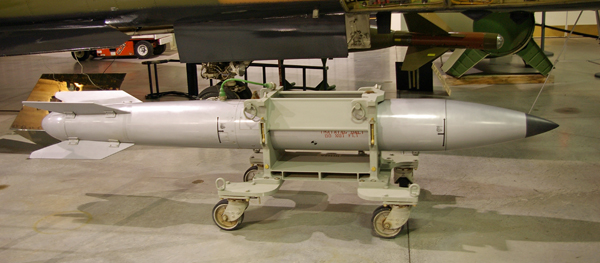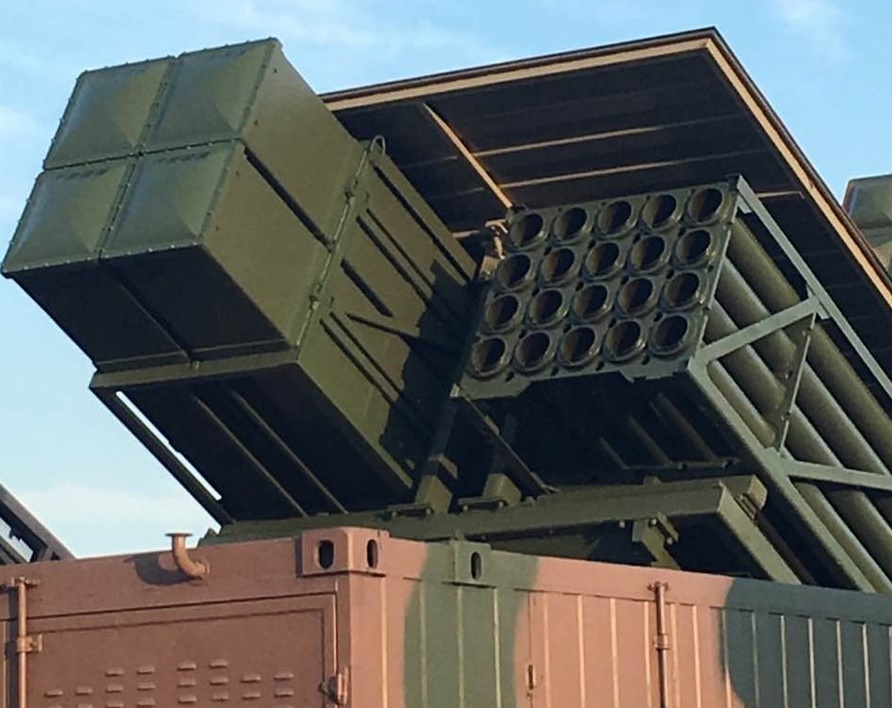MONOLOGUE WRITTEN BY CLYDE LEWIS
Today is Pearl Harbor day undefined the day that FDR said would live in infamy. History has not been too kind to Roosevelt and there are historical overviews that in hindsight teach us about how wars start and how it takes its toll on people.
The attack on Pearl Harbor was a false flag with intention to rally the American public to engage in the war. Looking back on history, knowing this mechanism has been used for centuries, it is easy to trace the false flag prods that have realigned public thinking and action to wartime participation and allegiance.
This morning as I toiled through all of the Pearl Harbor remembrances, I found something interesting that I wanted to share. Being a history nut, I was reading through a historic overview of how people were not surprised by the war- and how they had to cope a year into it.
The fact is that anyone in the know or diligently seeking out the facts could see, in rough outline, the danger of World War I or World War II coming years ahead, just as one can see the threats of economic collapse and World War III approaching now.
But the general public lacked a decent understanding prior to the first two world wars and lacks it now on the looming dangers created by environmental destruction and aggressive flirtation with World War III.
World War I was preceded by wars in North Africa and South-Eastern Europe. Weapons spending and war planning soared. Efforts to preserve the peace were launched. Then Austria-Hungary was handed an excuse for attacking Serbia, and certain Germans saw an excuse for attacking Belgium and France, and certain Brits saw an opportunity for fighting Germany, and so forth, and the slaughter was on. It could have been prevented, but the policies of decades made it likely, regardless of the immediate trigger. The public had very little idea.
World War II followed decades of the first warundefineds victors causing the German people to suffer economically while building up bitter resentment, of another unprecedented arms race, of Western investment in Nazis as preferable to leftists, and of training up Japan as a junior partner in empire but turning against it when it went too far.
The Nazi treatment of Jews was knowable and protested. The U.S. militaryundefineds aggression toward Japan was knowable and protested. The U.S. government drew up a list of actions that could provoke a Japanese attack, including an embargo on oil, and took each of those actions.
Now pay attention to what was written in newspapers and magazines in the 1940undefineds.
According to readings from the wartime press indicates that after Pearl Harbor there were blackouts, sugar and gas rationing, and war work. There lockdowns, yeast and toilet-paper shortages. They had anxiety, grief, sacrifice, boredom, and a strong sense of unity and national purpose.
Well, some of those things are happening now- except for the unity and national purpose.
It is like a loop that if you see the signs, and hear the saber rattling one day an aggressive nation will call the bluff of another aggressive nation and we would be back to being locked down, under curfew and controlled more so than we have been with COVID-19 measures.
Ever since The United States has pulled out of the anti-ballistic missile treaty and expanded NATO to a dozen new nations, moving right up to the border of Russia. Itundefineds placed troops and weapons on the Russian border- Russia is poised to invade Ukraine. Ukraine has warned of a undefinedbloody massacreundefined and five million Ukrainian refugees fleeing into Europe if Russia decides to invade Kiev.
The warning comes as the Kremlin today said escalating tensions in Europe are undefinedoff the scaleundefined ahead of crunch talks between Russian President Vladimir Putin and US President Joe Biden.
Kiev today accused Russia of deploying tanks and additional sniper teams near the Ukrainian border amid warnings Moscow could invade in weeks.
Satellite images have revealed huge new camps of Russian troops, tanks and artillery along the border as Putin continues massing his forces on Europeundefineds doorstep.
President Biden plans to warn Putin of severe economic consequences if Russia invades neighboring Ukraine in an effort to gain a diplomatic solution to deal with the tens of thousands of Russian troops at the border.
The UK has also joined Western leaders in vowing to form a undefinedunited frontundefined over Russian hostility toward Ukraine, with Prime Minister Boris Johnson vowing to use all undefinedeconomic and diplomatic tools at the UKundefineds disposalundefined.
Russia has denied it plans to attack Ukraine.
Tensions along Europeundefineds eastern border have been simmering since Putin annexed Crimea back in 2014, and have been threatening to boil over ever since Moscow began massing forces in the region starting in April this year.
Russia has sent a clear message undefined if a red line is drawn, Russia will not be provoked and if they are there will be war,
President Biden is warning that the US would deploy undefinedadditional forces and capabilitiesundefined to Eastern Europe in response to an invasion.
A White House spokesman said Monday evening said that Biden had spoken to the leaders of France, the UK, Germany and Italy, and they discussed undefinedtheir shared concern about the Russian military build-up on Ukraineundefineds borders and Russiaundefineds increasingly harsh rhetoric.undefined
The White House said: undefinedThe leaders underscored their support for Ukraineundefineds sovereignty and territorial integrity. Can you imagine the massive troop buildup from all of these countries against Russia- if this goes out of control we would see a major war ensue.
Biden will threaten Putin with undefinedsubstantial economicundefined sanctions should he invade Ukraine, according to reports. Theyundefinedre likely to be similar to the economic sanctions imposed on Iran over its attempts to develop a nuclear weapon.
Now remember how FDR handled Japan?
Don’t bother to ask the typical American what U.S. economic warfare had to do with provoking the Japanese to mount their attack, because they won’t know. They will have no idea what you are talking about.
When Franklin D. Roosevelt became president in 1933, the U.S. government fell under the control of a man who disliked the Japanese and harbored a romantic affection for the Chinese. It is rumored that Rooseveltundefineds family made a lot of money of Chinese trade.
Accordingly, the Roosevelt administration, while curtly dismissing Japanese diplomatic overtures to harmonize relations, imposed a series of increasingly stringent economic sanctions on Japan.
In 1939, the United States terminated the 1911 commercial treaty with Japan. “On July 2, 1940, Roosevelt signed the Export Control Act, authorizing the President to license or prohibit the export of essential defense materials.” Under this authority, “on July 31, exports of aviation motor fuels and lubricants and No. 1 heavy melting iron and steel scrap were restricted.”
Next, in a move aimed at Japan, Roosevelt slapped an embargo, effective October 16, “on all exports of scrap iron and steel to destinations other than Britain and the nations of the Western Hemisphere.”
Finally, on July 26, 1941, Roosevelt “froze Japanese assets in the United States, thus bringing commercial relations between the nations to an effective end. One-week later Roosevelt embargoed the export of such grades of oil as still were in commercial flow to Japan.” The British and the Dutch followed suit, embargoing exports to Japan from their colonies in southeast Asia.
Roosevelt and his subordinates knew they were putting Japan in an untenable position and that the Japanese government might well try to escape the stranglehold by going to war. Having broken the Japanese diplomatic code, the Americans knew, among many other things, what Foreign Minister Teijiro Toyoda had communicated to Ambassador Kichisaburo Nomura on July 31: “Commercial and economic relations between Japan and third countries, led by England and the United States, are gradually becoming so horribly strained that we cannot endure it much longer. Consequently, our Empire, to save its very life, must take measures to secure the raw materials of the South Seas.
Japan saw these sanctions as an act of war and invaded Pearl Harbor.
The difference between now and then is that the Japanese did not have hypersonic weapons. nuclear missiles and advanced drone weaponry.
But Russia does, and so do we and many of the other nations that threaten Russia.
There are other ways to tell that we are nearing a war footing and that the world may have to go through yet another major war that could be seen as the third world war.
There is war because the Pentagon says so, although the form that resistance takes is completely open to choice.
The US has completed the “first production unit” of its modernized B61-12 nuclear gravity bomb, set to replace the current aging models of the iconic B61, which has remained in service for more than 50 years.
The completion of the upgraded variable-yield nuclear bomb was announced by the National Nuclear Security Administration last week.
The modernization effectively turns the free-fall bomb into an adjustable munition, as the new B61-12s come with a guided tail kit supplied by Boeing. The kit gives the bomb some capability to maneuver mid-air instead of simply falling to the ground.
The new version of the iconic bomb is set to replace the B61-3, 4, and 7 models currently in the US nuclear stockpile. The only variant to remain in use alongside the B61-12 is the B61-11, a relatively modern bunker-buster modification of the bomb.
The US is expected to manufacture some 480 B61-12 bombs, according to estimates by the Federation of American Scientists (FAS), a Washington-based non-profit. The bomb is believed to have a variable yield ranging from 0.3 to 50 kilotons, making it a flexible weapon that can be used both for tactical and strategic purposes.
In comparison, the first nuclear bomb ever used by the US, which was dropped on the Japanese city of Hiroshima, had a yield of some 15 kilotons.
This is clearly a response to the announcement that China and Russia have developed hypersonic weapons.
China, the U.S., and Russia have the most advanced capabilities, and several other countries are investigating the technology, including India, Japan, Australia, France, Germany and North Korea, which claims to have tested a hypersonic missile.
Russia has its Avangard which is a glide vehicle launched from an intercontinental ballistic missile and will reportedly carry a nuclear warhead. Russian news sources claim it entered into combat duty in December 2019. Tsirkon is a ship-launched cruise missile said to be capable of striking both ground and naval targets.
Chinaundefineds military conducted possibly two hypersonic weapons tests over the summer, including the launch into space of an orbiting hypersonic weapon capable of carrying a nuclear payload.
Gregory Hayes, chief executive officer of U.S. defense contractor Raytheon Technologies Corp., told Bloomberg TV Oct. 26 that the U.S. is “at least several years behind” China in hypersonic technology despite significant investment. Development funding increased approximately 740% in the five years before 2020 and is expected to total almost $15 billion between 2015 and 2024, not including production costs.
The U.S. Navy leads the development of a glide vehicle for use across the military branches, while the Air Force is working on an air-launched glider. The government’s Defense Advanced Research Projects Agency, with Air Force support, is developing an air-launched hypersonic cruise missile.
U.S. officials say that American hypersonic weapons, unlike those being developed in China and Russia, are being designed to carry conventional rather than nuclear weapons.
But this provides scant reassurance to potential U.S. adversaries, who would have no way of knowing whether such a weapon in fact carried a nuclear warhead while it was in flight. The pursuit of these systems by China and Russia reflects a concern that U.S. hypersonic weapons could enable America to conduct a preemptive, decapitating strike on their nuclear arsenals and supporting infrastructure. U.S. missile defense deployments could then limit their ability to conduct a retaliatory strike against the U.S.
Meanwhile, experts are weighing on on a wild speculation that China has developed Trojan Horse nuclear launchers that can be hidden in shipping containers.
Military analysts believe the country’s huge fleet of freighters and fishing vessels could be turned into warships with the use of the secretive container missiles.
Disguised as a regular shipping containers, they can be sneaked on board a vessel to blend in seamlessly with the hundreds of others on board. The sheer number of container ships in the world makes them harder to pinpoint than warships in the event of war.
Like the fabled Trojan Horse, the missiles would be quietly smuggled into or near an enemy port on a civilian vessel before being unleashed in a surprise attack.
China denies having them undefined but military analysts say that they do.
Retired Navy Captain Jim Fanell, a former Pacific Fleet Intelligence Chief, previously said a containerized anti-ship missile would add a significant threat to the US Navy.
It would be similar to Pearl Harbor where ports would be targeted.
The ghost of Pearl Harbor can be seen again as these missile toads are planning their endgame war strategies undefined and more so than not this has been in the planning for years.
Remember, not only is Russia primed for a fight but so are we . We are ready to amass troops at the border or Ukraine. we already organized and carried out a coup in Ukraine and installed a Ukrainian government full of neo-Nazis. During the Trump era we were lied to about Russian collusion Russian invasions and Russian attacks on airplanes.
Itundefineds fantasized about its missile-defense system allowing it to attack Russia, or China for that matter, without counter-attack. We have proposed to put more nukes in Europe aimed at Russia. We have built bases around the edges of China. We want to militarize Japan again. We are about to impose harsher sanctions on Russia. Our government and media have threatened, mocked, ridiculed, and demonized Russia and its president and
Informed observers warn of the heightened risk of nuclear Armageddon.
And most people in the United States havenundefinedt a clue.
Slowly, humanity has become aware of the existence of those who promulgate war for their own advance and control of humanity. They control the money supply and they control all or nearly all of the sources of information for the mass of humanity.
Once awakened, the informed observer is no longer surprised as the evolution of events proceeds.
The Chinese are so preoccupied with war that its government recommendation for Chinese people to store necessities for an emergency. There were scattered reports of runs on rice, noodles and cooking oil in some Chinese cities, according to local media.
They see that war may be imminent undefined and yet Americans are not even thinking about what this would do to their way of life- scarcity is not something to take lightly and so it would be wise to do what the Chinese are doing and preparing for what is coming.
At least while the provisions are available.
Again, if you read the war press of the past you will begin to feel a little Deja vu.
In 1942, Carl Sandburg, in the Chicago Times. wrote:
As a Nation and a people we have been going through changes, some of them hard to take. . . . We have learned to be a little sad and a little lonesome, without being sickly about it. . . . There are things we love that we’re going to have [again] if the breaks are not too bad against us.”
In the New York Herald Tribune we read:
“Our war opened with a disaster which is still hard to excuse. . . . At home our immense industrial machine was being geared, by heroic effort, to its task; but political calculations and timidities, the President’s ineptness in the creation of effective administrative machinery, the demands of pressure groups incapable of seeing the greatness of the crisis beyond their own narrow interests, delayed the work. All this will cost us many lives and much sacrifice.undefined
Meanwhile, in the Los Angeles Times in 1942, we read:
“Back of us is a year of heartbreak and a multitude of new experiences we always felt can’t happen here. . . . We used to grimace at pictures of long queues outside English markets, but we chuckle out the other side of our mouths now. The butter and egg and citrus scavengers hang now like a pall over the corner grocer waiting for a shipment.”
A lot of this sounds familiar as we have been groomed for a major war even with most of the draconian plans that have been implemented with COVID-19. An unwinnable war would be good for the Malthusian profiteers. It would be the big and gaudy bow out in the box of war spoils needed to implement the new world order or the great reset.
World War III is not inevitable, but it is clearly headed our way if we donundefinedt change course. And changing course would give us our best shot at avoiding environmental disaster as well.



